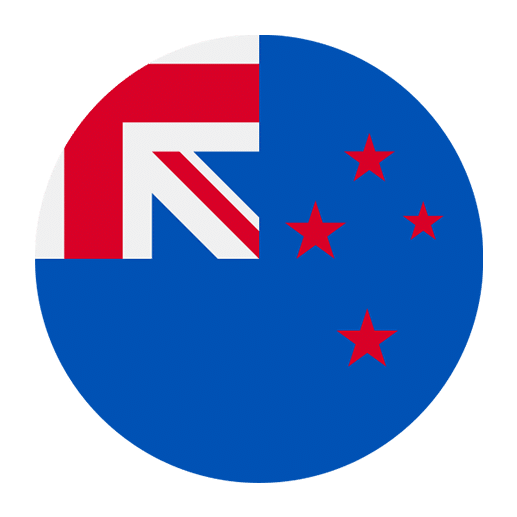The Māori language, or Te Reo Māori, is the indigenous language of the Māori people of New Zealand. It is a beautiful, expressive, and culturally rich language that has seen a resurgence in recent years, thanks to concerted efforts to revitalize it. One of the key components of mastering any language is understanding its verb phrases, as these are crucial for constructing sentences and conveying actions and states. In this article, we will delve into the structure of Māori verb phrases, offering insights and examples to aid English-speaking learners in their journey toward fluency.
The Basics of Māori Verb Phrases
Māori verb phrases are pivotal in forming sentences, as they carry the action or state that the subject is performing or experiencing. Unlike English, where the word order is typically Subject-Verb-Object (SVO), Māori predominantly follows a Verb-Subject-Object (VSO) structure. Understanding this fundamental difference is essential for grasping how verb phrases are used in Māori.
Components of a Māori Verb Phrase
A typical Māori verb phrase consists of several components:
1. **Verb:** The main action or state.
2. **Tense Marker:** Indicates the time frame of the action (past, present, future, etc.).
3. **Aspect Marker:** Provides additional information about the nature of the action (completed, ongoing, etc.).
4. **Modifiers:** Include particles and adverbs that modify the verb.
Let’s break down each component with examples.
1. Verb: The core of the verb phrase is the verb itself. Māori verbs can be simple or compound. For example:
– Simple: “kai” (to eat)
– Compound: “whakatū” (to set up)
2. Tense Markers: Tense markers in Māori are crucial as they place the action in time. Common tense markers include:
– Present: “e…ana”
– Past: “i”
– Future: “ka”
– Immediate Future: “kua”
For example:
– Present: “Kei te kai ahau.” (I am eating.)
– Past: “I kai ahau.” (I ate.)
– Future: “Ka kai ahau.” (I will eat.)
– Immediate Future: “Kua kai ahau.” (I am about to eat.)
3. Aspect Markers: Aspect markers provide more detail about the action’s completion or continuity. Common aspect markers include:
– Continuous: “e…ana” (same as the present tense marker)
– Completed: “kua”
– Habitual: “e”
For example:
– Continuous: “E kai ana ahau.” (I am eating.)
– Completed: “Kua kai ahau.” (I have eaten.)
– Habitual: “E kai ana ahau i ngā wā katoa.” (I eat all the time.)
4. Modifiers: These include particles and adverbs that further modify the verb, often providing additional context or intensity. Examples include:
– Particle: “anake” (only)
– Adverb: “tere” (quickly)
For example:
– “Kei te kai anake ahau.” (I am only eating.)
– “Ka kai tere ahau.” (I will eat quickly.)
Combining Elements in Māori Verb Phrases
Constructing a complete Māori verb phrase involves combining these elements in a logical sequence. Typically, the order is:
**Tense Marker + Aspect Marker + Verb + Subject + Object/Modifiers.**
Let’s consider a few examples to illustrate this structure:
1. **Present Continuous Action:**
– “E kai ana ahau i te āporo.”
– (I am eating the apple.)
– Breakdown: “E” (present continuous marker) + “kai” (verb) + “ana” (continuous aspect marker) + “ahau” (subject) + “i te āporo” (object).
2. **Past Completed Action:**
– “I kai a Hone i te āporo.”
– (Hone ate the apple.)
– Breakdown: “I” (past tense marker) + “kai” (verb) + “a Hone” (subject) + “i te āporo” (object).
3. **Future Action with Modifier:**
– “Ka kai tere a Rangi.”
– (Rangi will eat quickly.)
– Breakdown: “Ka” (future tense marker) + “kai” (verb) + “tere” (modifier) + “a Rangi” (subject).
Negation in Māori Verb Phrases
Negating verb phrases in Māori involves using the particle “kāore” (not) before the verb phrase. The structure changes slightly depending on the tense of the verb phrase.
Present Tense:
– Affirmative: “Kei te kai ahau.” (I am eating.)
– Negative: “Kāore ahau i te kai.” (I am not eating.)
Past Tense:
– Affirmative: “I kai ahau.” (I ate.)
– Negative: “Kāore ahau i kai.” (I did not eat.)
Future Tense:
– Affirmative: “Ka kai ahau.” (I will eat.)
– Negative: “Kāore ahau e kai.” (I will not eat.)
Questions in Māori Verb Phrases
Forming questions in Māori often involves using question particles or reordering the verb phrase. Common question particles include “He” (Is/Are) and “Kei” (Is/Are… at/located).
For example:
– Statement: “Kei te kai a Mere.” (Mere is eating.)
– Question: “Kei te kai a Mere?” (Is Mere eating?)
Another way to form questions is by using the particle “āhea” (when) or “hei aha” (why).
For example:
– “Āhea koe kai ai?” (When will you eat?)
– “Hei aha koe kai ai?” (Why are you eating?)
Common Māori Verb Phrases and Their Usage
To further illustrate the structure of Māori verb phrases, let’s look at some common phrases and their usage in everyday conversation.
1. Going Somewhere:
– “Kei te haere ahau ki te toa.” (I am going to the shop.)
– Breakdown: “Kei te” (present continuous marker) + “haere” (verb) + “ahau” (subject) + “ki te toa” (object/goal).
2. Doing an Activity:
– “E pānui ana a Hine i te pukapuka.” (Hine is reading the book.)
– Breakdown: “E” (present continuous marker) + “pānui” (verb) + “ana” (continuous aspect marker) + “a Hine” (subject) + “i te pukapuka” (object).
3. Describing a Past Event:
– “I oma a Pita ki te kura.” (Pita ran to the school.)
– Breakdown: “I” (past tense marker) + “oma” (verb) + “a Pita” (subject) + “ki te kura” (object/goal).
Advanced Concepts: Passive Constructions and Causatives
As learners progress, they will encounter more advanced structures, such as passive constructions and causatives, which add depth and nuance to Māori verb phrases.
Passive Constructions
In Māori, passive verbs are used to shift the focus of the sentence from the subject performing the action to the object receiving the action. This is done by adding a passive suffix to the verb, such as “-tia,” “-hia,” “-ngia,” or “-ia.”
For example:
– Active: “Ka kai te kurī i te kai.” (The dog will eat the food.)
– Passive: “Ka kaingia te kai e te kurī.” (The food will be eaten by the dog.)
In this example, “kai” (eat) becomes “kaingia” (be eaten), and the focus shifts to “te kai” (the food).
Causative Constructions
Causative verbs indicate that the subject is causing someone else to perform the action. This is often achieved by using the prefix “whaka-” before the verb.
For example:
– Basic Verb: “ako” (to learn)
– Causative Verb: “whakaako” (to teach, to cause to learn)
Sentence examples:
– Basic: “Kei te ako ngā tamariki.” (The children are learning.)
– Causative: “Kei te whakaako te kaiako i ngā tamariki.” (The teacher is teaching the children.)
Practice and Application
To effectively learn and internalize Māori verb phrases, consistent practice and application are essential. Here are some practical steps you can take:
1. Create Flashcards: Make flashcards with different verb phrases, including various tenses, aspects, and modifiers. Practice regularly to reinforce your understanding.
2. Engage in Conversations: Practice speaking with native speakers or fellow learners. Use verb phrases in different contexts to build confidence and fluency.
3. Listen and Imitate: Listen to Māori media, such as radio, podcasts, and TV shows. Pay attention to how verb phrases are used and try to imitate the pronunciation and intonation.
4. Write Sentences: Write sentences and short paragraphs using various verb phrases. This will help solidify your knowledge and improve your written skills.
5. Use Language Apps: Utilize language learning apps that offer Māori language courses. These apps often provide interactive exercises and quizzes to reinforce learning.
Conclusion
Understanding the structure of Māori verb phrases is a fundamental step in mastering Te Reo Māori. By grasping the components of verb phrases, their order, and their usage in different tenses and contexts, learners can effectively communicate actions and states in Māori. Remember to practice consistently, engage with native speakers, and immerse yourself in the language to build proficiency. With dedication and effort, you will find yourself becoming more comfortable and fluent in using Māori verb phrases, enriching your language skills and deepening your connection to Māori culture.

